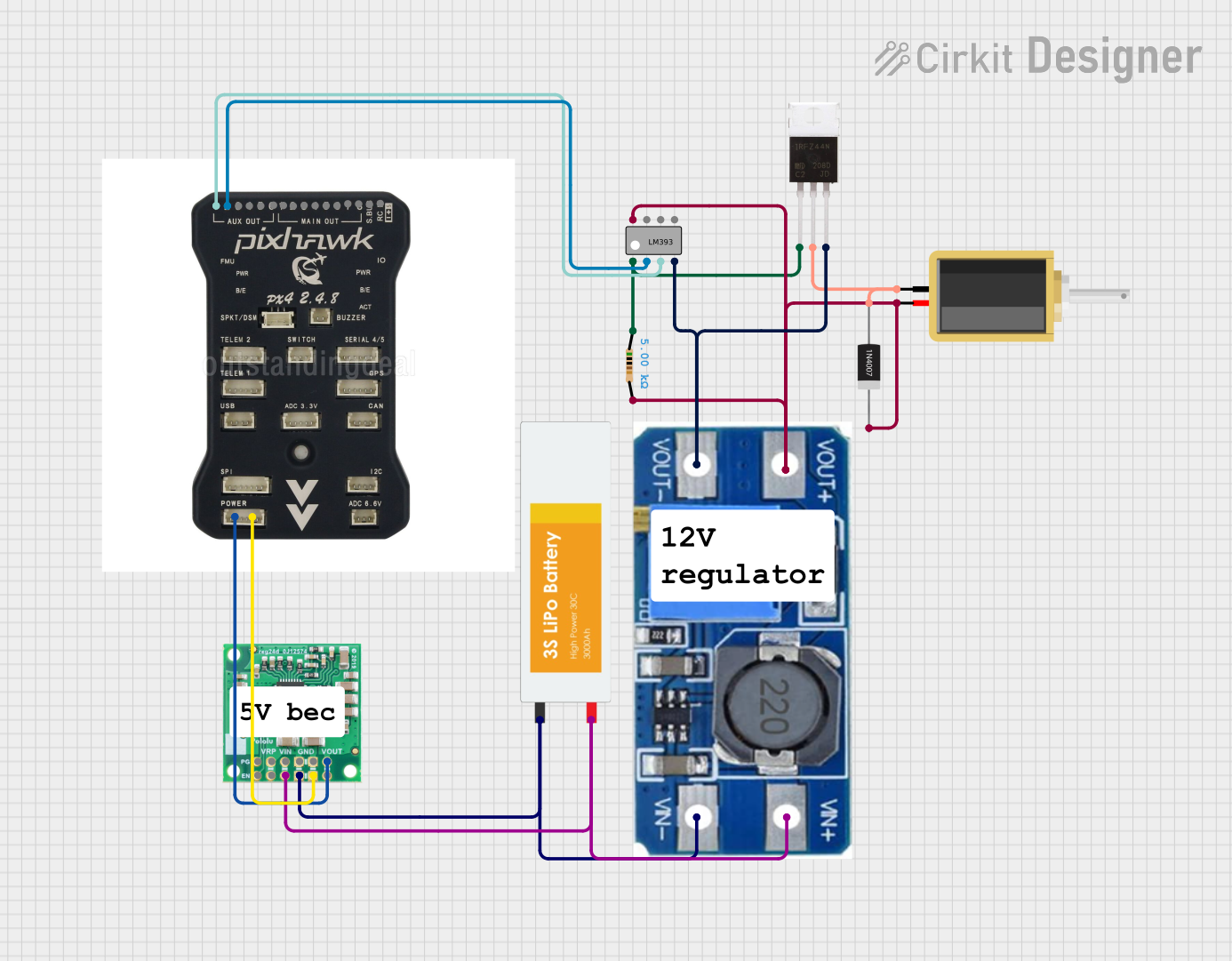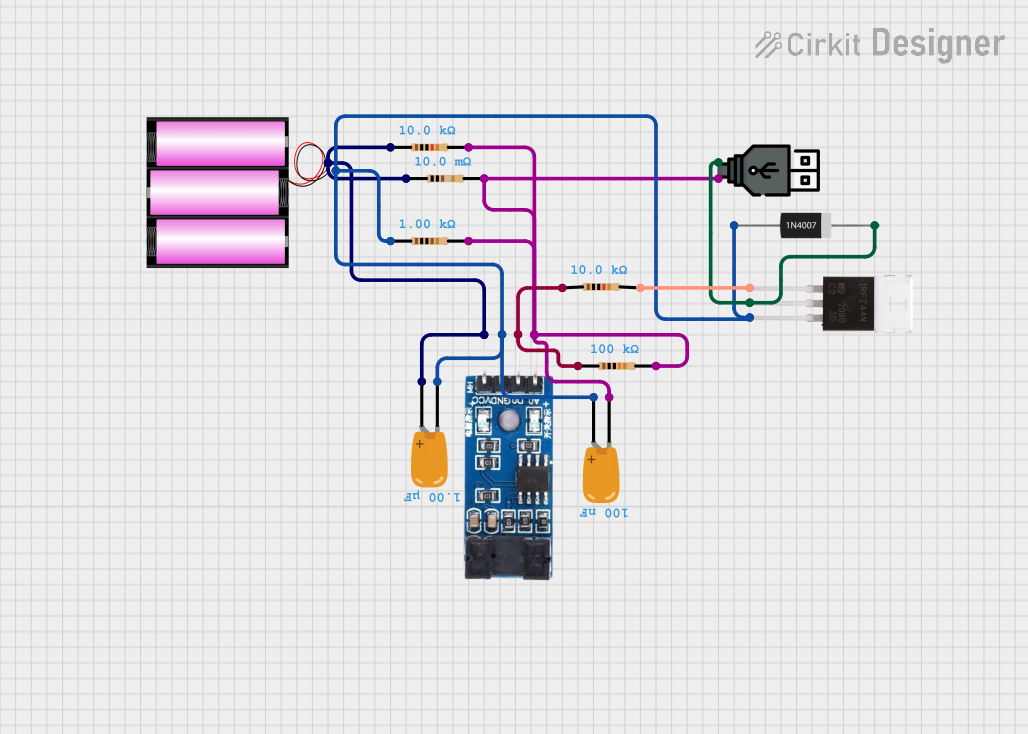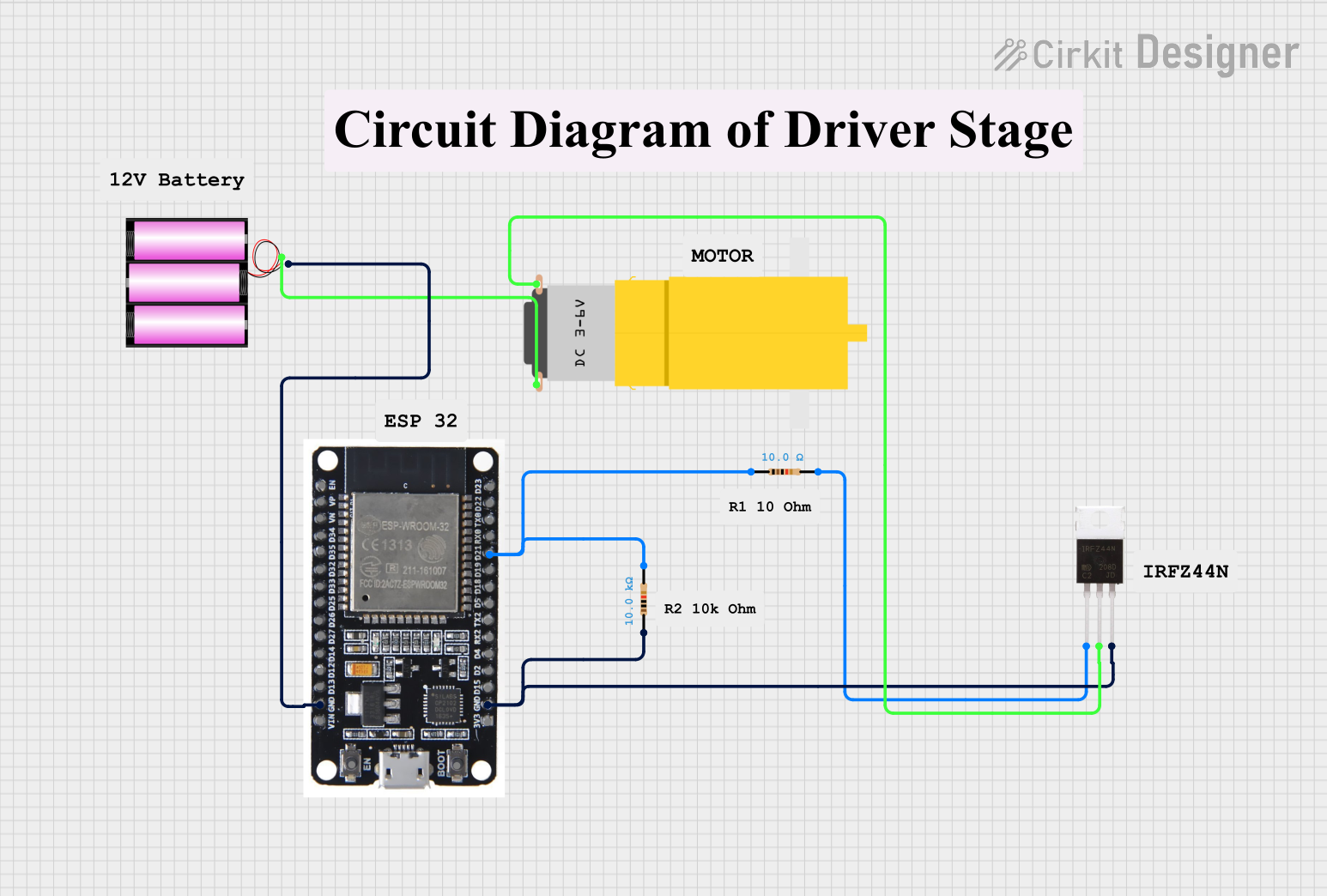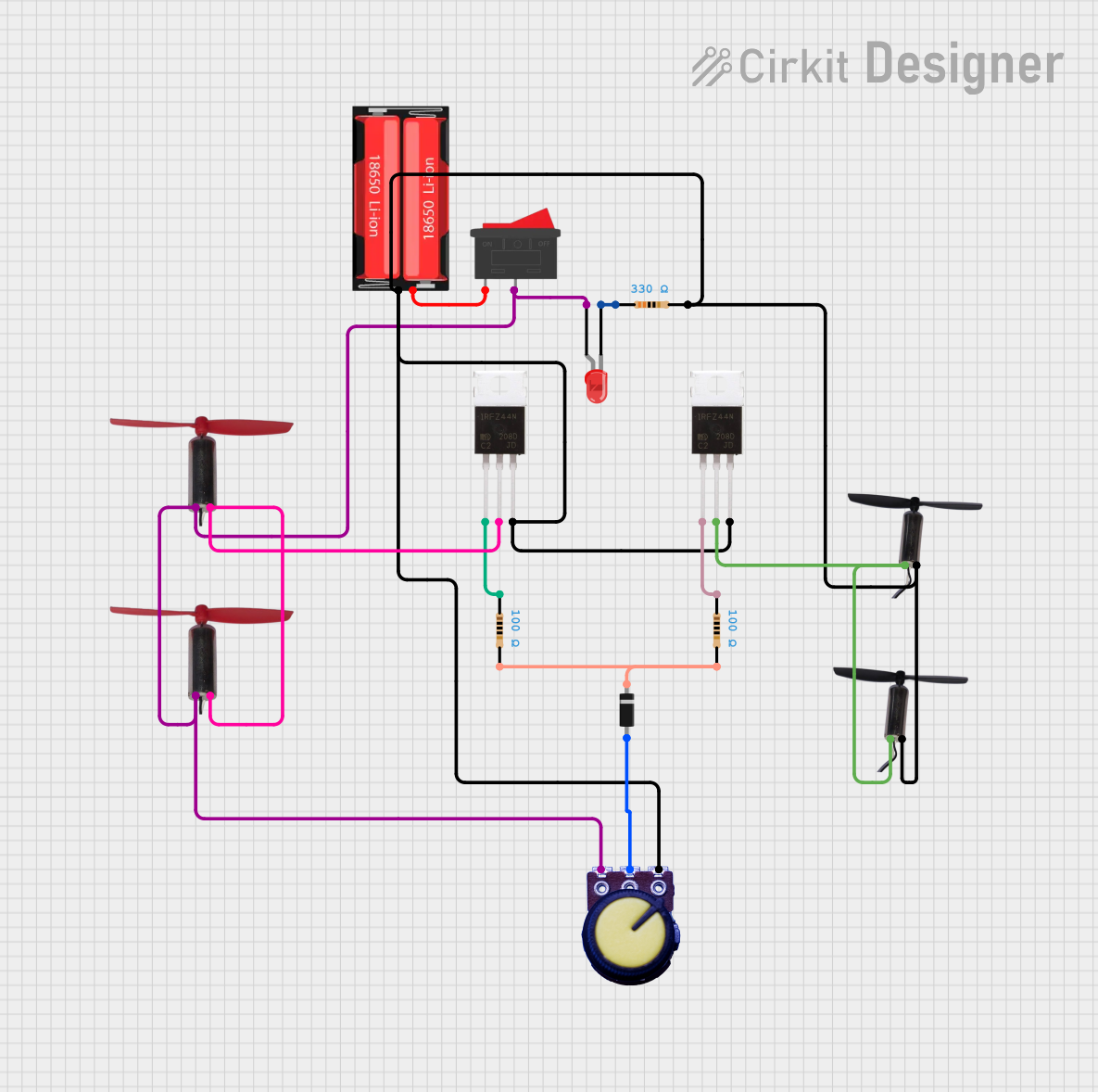
How to Use Mosfet IRF4905: Examples, Pinouts, and Specs

 Design with Mosfet IRF4905 in Cirkit Designer
Design with Mosfet IRF4905 in Cirkit DesignerIntroduction
The IRF4905 is a P-channel MOSFET designed for high-speed switching applications. It features a low on-resistance and high current handling capability, making it suitable for power management and amplification in various electronic circuits. This component is widely used in applications such as motor control, DC-DC converters, and battery management systems. Its robust design and high power dissipation capacity make it a reliable choice for demanding environments.
Explore Projects Built with Mosfet IRF4905

 Open Project in Cirkit Designer
Open Project in Cirkit Designer
 Open Project in Cirkit Designer
Open Project in Cirkit Designer
 Open Project in Cirkit Designer
Open Project in Cirkit Designer
 Open Project in Cirkit Designer
Open Project in Cirkit DesignerExplore Projects Built with Mosfet IRF4905

 Open Project in Cirkit Designer
Open Project in Cirkit Designer
 Open Project in Cirkit Designer
Open Project in Cirkit Designer
 Open Project in Cirkit Designer
Open Project in Cirkit Designer
 Open Project in Cirkit Designer
Open Project in Cirkit DesignerTechnical Specifications
Below are the key technical details of the IRF4905 MOSFET:
- Type: P-Channel MOSFET
- Drain-Source Voltage (VDS): -55V
- Continuous Drain Current (ID): -74A (at 25°C)
- Gate-Source Voltage (VGS): ±20V
- Power Dissipation (PD): 200W (at 25°C)
- RDS(on): 0.02Ω (max) at VGS = -10V
- Operating Temperature Range: -55°C to +175°C
- Package Type: TO-220
Pin Configuration and Descriptions
The IRF4905 comes in a TO-220 package with three pins. The table below describes each pin:
| Pin Number | Pin Name | Description |
|---|---|---|
| 1 | Gate | Controls the MOSFET switching state |
| 2 | Drain | Current flows into this terminal |
| 3 | Source | Current flows out of this terminal |
Usage Instructions
How to Use the IRF4905 in a Circuit
- Power Supply: Ensure the voltage across the drain and source (VDS) does not exceed -55V.
- Gate Drive: Apply a gate-source voltage (VGS) of -10V for optimal performance. A lower VGS may result in higher RDS(on), reducing efficiency.
- Load Connection: Connect the load between the drain and the positive terminal of the power supply.
- Gate Resistor: Use a resistor (typically 10Ω to 100Ω) in series with the gate to limit inrush current and prevent damage to the MOSFET.
- Heat Dissipation: Attach a heatsink to the TO-220 package if the MOSFET is expected to handle high currents or operate for extended periods.
Example Circuit with Arduino UNO
The IRF4905 can be used to control a DC motor with an Arduino UNO. Below is an example circuit and code:
Circuit Description
- Connect the source pin of the IRF4905 to the positive terminal of the power supply.
- Connect the drain pin to one terminal of the DC motor. The other terminal of the motor connects to the ground.
- Connect the gate pin to a PWM-capable pin on the Arduino (e.g., pin 9) through a 100Ω resistor.
- Add a flyback diode across the motor terminals to protect the MOSFET from voltage spikes.
Arduino Code
// Example code to control a DC motor using the IRF4905 MOSFET
// Connect the gate of the IRF4905 to pin 9 of the Arduino through a 100Ω resistor.
const int motorPin = 9; // PWM pin connected to the gate of the IRF4905
void setup() {
pinMode(motorPin, OUTPUT); // Set the motor pin as an output
}
void loop() {
analogWrite(motorPin, 128); // Set motor speed to 50% (PWM value: 128)
delay(5000); // Run motor for 5 seconds
analogWrite(motorPin, 0); // Turn off the motor
delay(5000); // Wait for 5 seconds
}
Important Considerations and Best Practices
- Gate Voltage: Always ensure the gate voltage is within the specified range (±20V). Exceeding this limit can permanently damage the MOSFET.
- Heat Management: Use a heatsink or active cooling if the MOSFET operates at high currents for extended periods.
- Flyback Diode: When driving inductive loads (e.g., motors, relays), always use a flyback diode to protect the MOSFET from voltage spikes.
- Static Sensitivity: Handle the IRF4905 with care to avoid damage from electrostatic discharge (ESD). Use proper grounding and anti-static precautions.
Troubleshooting and FAQs
Common Issues and Solutions
MOSFET Overheating
- Cause: High current or insufficient cooling.
- Solution: Attach a heatsink or reduce the load current. Ensure proper ventilation.
MOSFET Not Switching
- Cause: Insufficient gate voltage or incorrect wiring.
- Solution: Verify the gate voltage is at least -10V. Check the circuit connections.
Motor Not Running
- Cause: Incorrect wiring or damaged MOSFET.
- Solution: Double-check the circuit connections. Test the MOSFET with a multimeter.
Voltage Spikes Damaging the MOSFET
- Cause: Inductive load without a flyback diode.
- Solution: Add a flyback diode across the load to suppress voltage spikes.
FAQs
Q1: Can the IRF4905 be used for high-frequency switching?
A1: Yes, the IRF4905 is suitable for high-frequency switching applications. However, ensure the gate drive circuit can handle the required switching speed.
Q2: What is the maximum current the IRF4905 can handle?
A2: The IRF4905 can handle up to -74A continuously at 25°C, provided adequate cooling is used.
Q3: Can I use the IRF4905 with a 3.3V microcontroller?
A3: No, the IRF4905 requires a gate-source voltage of at least -10V for optimal performance. Use a gate driver circuit to step up the voltage if needed.
Q4: How do I test if the IRF4905 is functioning correctly?
A4: Use a multimeter to check the continuity between the drain and source terminals. The MOSFET should conduct when a negative voltage is applied to the gate and block current otherwise.
This concludes the documentation for the IRF4905 MOSFET.